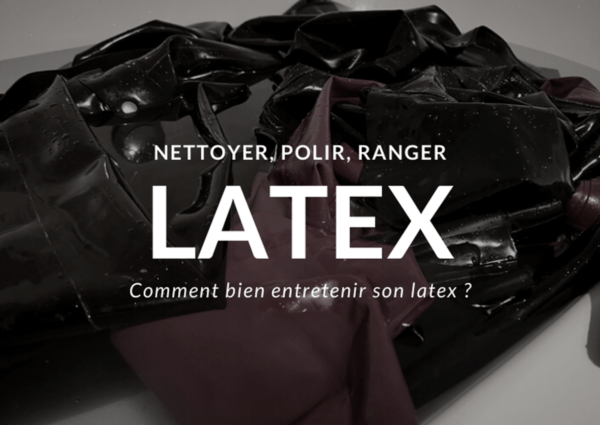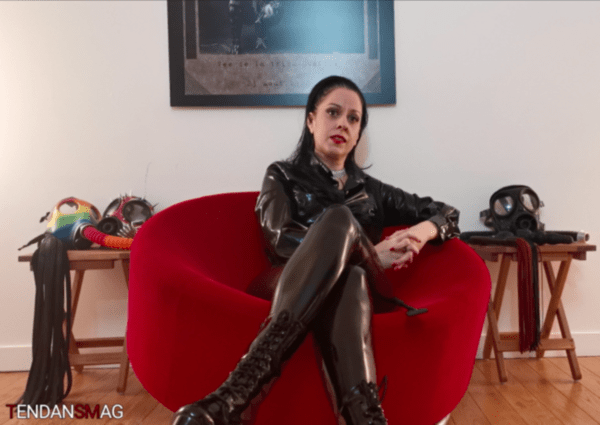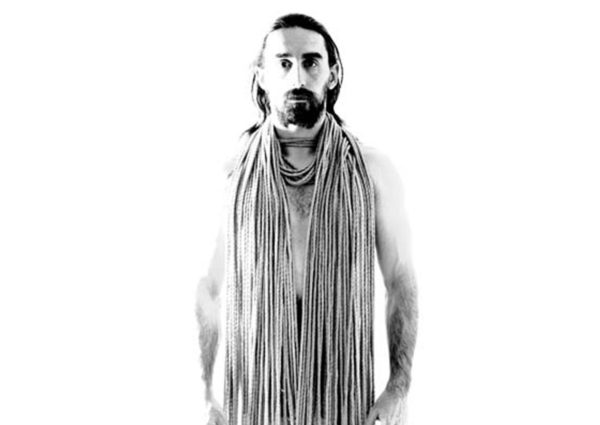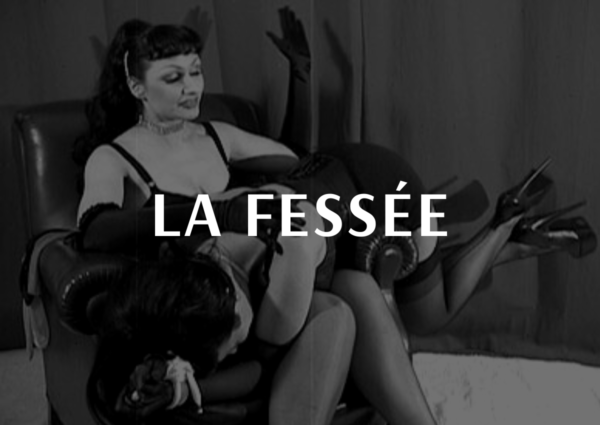The good news is you can change your attachment style. If this is you, its important to remember that our attachment systems are designed to be malleable. If you are someone who tends to have short-lived or tumultuous relationships, or who simply experiences a lot of stress when getting close to someone, you may have a fearful avoidant attachment style. Developmentally, it is simply the presence of the mother that first helps a distressed infant calm down. Children with this attachment style often long for close relationships but also fear trusting others and getting hurt. Whether someone with a fearful-avoidant attachment style comes back or not depends on them. But the process is set in motion through the attachment relationship. So what can you do instead of becoming angry, blaming, or engaging in other fight or flight behaviors? You might also misjudge his attempts to make you laugh when youre down, or get angry when he tries to give you practical advice instead of emotional support. This can help you avoid them together. Tell them what makes you feel fear and what triggers your anxiety. Download PDF. disorganized (aka fearful-avoidant in children) Avoidant, anxious, and disorganized are considered insecure attachment styles. Particular emotional states may trigger memories of abuse, or may ring alarm bells for you that you need to manage the other persons emotions in order to stay safe. More specifically, you may also confuse your partner because as a person with a fearful avoidant attachment style, you have more than one dominant pattern of responding to stress in the relationship. It can be helpful to others in your life for you to try to vocalize those boundaries. The connection between narcissism and attachment styles is a complex one. This means that there will be a big gap between your perception of the relationship and your partners perception - which means its much harder for him or her to predict how you will act. 6 Exact Reasons & How To Stop. Expectations 4. Its a complex space to navigate, requiring serious self-evaluation. 2 Accept your partner for who they are. DOI: How to Understand and Build Intimacy in Every Relationship, 5 Consequences of an Unhappy Marriage and 5 Tips to Work Toward Change, Your Guide to Codependent Relationships and Recovery, Your Guide to Monoclonal Antibodies Side Effects, 7 Signs That Its Healthy to Be Friends with Your Ex, What Does It Mean to be Intellectually Compatible? For most of us, our aim is to develop and maintain relationships that are secure, open, supportive, and beneficial to both. Not when youve lived such a life for more than three score years, and have little functional life remaining. CLICK HERE to download this special report. This article serves as a helpful starting point for therapists wishing to use knowledge of attachment styles to benefit their clients existing and future relationships and offers worksheets to begin that journey. A therapist can then help you relearn how to react to one another in a healthful way. And why do you think that was? They explored the new room and the toys while the mother was present, They were upset at her departure but calmed down after a while; and, They showed relief and happiness when she came back, They were reluctant to explore the new environment even when the mother was there, They were inconsolable when she left; and. Discover how you too can use this little known "Dark Feminine Art" to weed out the toxic men whilst cultivating real emotional attraction with high value high esteemed men. 1. We hope you enjoyed reading this article. . A person with a fearful avoidant attachment style likely has a long history of upheaval in relationships. Download 3 Free Positive Relationships Exercises (PDF) Save my name, email, and website in this browser for the next time I comment. Write every traumatic experience down, so that you can re-acquaint yourself with what really happened to you. These tips can help. They typically: Feel unworthy; Are ambivalent in relationships The avoidant typically pushes away in relationships to feel safe. Attachment theory is concerned with safety and trust in intimate relationships.. You can encourage them to talk about what theyre feeling or what fears they sense, but dont be aggressive. Only to realize later on that the other person was coming from a completely different place than you thought they were. Parenting styles and attachment And that is - as someone with a fearful avoidant attachment style, you might sometimes make other people feel uncomfortable as they come to see your attachment patterns up close. But know that you are not alone. While people with fearful avoidant attachment actively want to have a relationship, their instincts work against their wishes. To explain what this looks like, Ill need to go into a little more detail about attachment style research, and how we classify the different patterns. They may seem unstable or reactionary to others. Fearful avoidant attachment style in adulthood is an insecure attachment style associated with a disorganized attachment style in childhood. For example, you might assume that he or she is ignoring you or falling out of love with you when really theyre just feeling down about work or are distracted by another problem in their life. Usually, these kinds of people do not invest emotionally in others, and find it easy to leave them when they are no longer useful or interesting. Emotional Volatility In Relationships 3. And sadly, the mistaken projections that you make as a result may lead you to act in bizarre ways in relationships yourself. Use the Identifying Needs and Wants worksheet to explore a situation or issue when you feel your needs have not been met. Anxious attachment also results from inconsistency during childhood, often the result of absenteeism from caregivers. Dont forget to download our three Positive Relationships Exercises for free. People with fearful avoidant attachment deeply desire intimacy. Like all insecure attachment styles, it is an unconscious strategy to survive very early childhood trauma (age 1-2). That makes them oscillate between emotional highs and lows. A fearful attachment style, also known as disorganized attachment, is characterised by a combination of behaviours that can range from avoidance to clinginess. They seek intimacy from partners. People with fearful avoidant attachment may show signs like: People with fearful avoidant attachment are prone to have rocky, dramatic relationships. Remember that every choice you make and every step you take is a step in the direction towards more love, connection and beauty in your life or more disconnection, isolation and trauma. All Rights Reserved, This is our template for thinking about fearful avoidant attachment style, also known as the. But a core feature of these attachment schemas is that they are subject to change, even in the context of just one close relationship! Because youre ready to feel let down, disappointed and angry, you might see these natural responses as cruel or even abusive. So we can do a lot to transform our habitual patterns by feeling through, understanding, and reframing the events of our past. They do, however, often still want relationships. Shame 10. This often happens through abusive parenting, but some studies have shown that simply having a parent who is frightened or traumatized, or who fails to provide the child with a sense of safety because they themselves cannot feel safe, can also lead to a fearful avoidant attachment style. Individuals with a secure attachment style often have experienced available and supportive parents. Dismissing-Avoidant: the third type. They identified four types of adult attachment: AnxiousPreoccupied, Dismissive Avoidant, Fearful Avoidant, and Secure. This is designed to protect them and their fear of being too exposed. A secure attachment style from childhood could deviate in the direction of a fearful. FEARFUL AVOIDANT. Let's look at what we know and don't know: Welcome to the deliberation stage. This can mean that you take a defensive posture in relationships, expecting to be abandoned or left for someone better. In turn, they require frequent reassurance and validation. What message might you give yourself to show more kindness and compassion to yourself and your partner? Their attachment style, on the other hand, is marked by a deep-seated fear of being rejected and left alone, which can make it hard for them to trust othe. Have you heard of fearful avoidant attachment or an avoidant personality disorder? Those who were classified as anxiously attached showed the following behaviors: Those who were classified as having an avoidant attachment style were: Finally, we have the children who showed a fearful avoidant attachment style. Fearful-Avoidants try to rein in their feelings, but can't. Decoding your feelings and trying to identify which type of love you feel for someone may not be the easiest task, but we're here to help. This can be troubling in many relationships. If you ask most people, they are likely to say that they have been the victim of [], Chamber of Commerce (KvK) Registration Number: 64733564, 6229 HN Maastricht, 2023 PositivePsychology.com B.V. Last medically reviewed on December 11, 2019, Sex and romance may come to mind first, but intimacy plays a role in other types of relationships too! If your partner becomes emotionally charged, you can employ ways to promote calmness. That can be taxing on a partner and difficult to maintain. If you did not have this kind of relationship with your parent(s), you may find it more difficult to regulate your emotions. These broad attachment styles include: Infants who have their needs met develop secure attachments. Sarah is a Shen Wade Media Certified Coach.She has a Masters in psychology and works as a special education advisor in early childhood. 1 George, C., Kaplan, N., & Main, M. (1985). The first and most obvious sign that you have a fearful avoidant attachment style is that your romantic partner is consistently confused by the way you act in the relationship. Disorganized attachment (also called fearful avoidance) is a mix of these two attachment styles. Its possible to change your attachment style. Playing hard-to-get is a very sweet text. Feeling safe and secure is important in life, particularly in relationships. Anxious-avoidants are not only afraid of intimacy and commitment, but they distrust and lash out emotionally at anyone who tries to get close to them. If you can work together, you may be able to relearn attachment more easily. When attachment theory was first theorized in the 1960s, it was only applied to the behavior of young children, but in the 1980s attachment theory was expanded to include adult behavior as well. Step two Select up to four relationships you value and explore the reasons why. Attachment Theory is the single largest predictor of success in your relationships, whether they are romantic, familial or platonic. They were distressed by the scary situation- the new place and the new person, but the mother was not a safe person for them to turn to. When children have negligent parents or caregivers perhaps they are not present or emotionally unavailable they can form unhelpful attachment patterns. Here are some other articles that I think you'd really like too Dismissive Avoidant Attachment: What Is It & 7 Obvious Signs, 8 Signs An Avoidant Loves You + How To Inspire More Of It, What Is Trauma Bonding & 7 Steps To Break A Trauma Bond, 3 Powerful Ways To Self Soothe Anxious Attachment, Copyright National Council for Research on Women. If they are more anxious and don't choose to avoid their feelings, they will start to reflect. MORE: 15 Shocking Signs Of Abandonment Issues In Adults. People with Fearful-Avoidant Attachment patterns are ambivalent and afraid of commitment. Some mild shame is good for us; over the course of human evolution, shame has helped us learn to relate to others, to practice moral and cultural rules, and to think carefully about the consequences of our actions. They showed little response on the mothers departure; and, Again showed little response upon her return, Walking towards the mother but then quickly running away, Abuse substances as a way of escaping from relationship stress, Being crushed by the weight of your own fundamental worthlessness, A continual sense of guilt and a feeling that youre almost always in the wrong, Worrying that everything you do is inadequate or even harmful, Feeling disconnected from your surroundings and from other people because you are preoccupied with how you will be perceived by others, Not paying attention to your own needs and desires because you are afraid they are evil or dangerous, Responding to cues such as physical touch, An affectionate lilt in the mothers voice; and, Adjusting to the mothers body language and emotional responses to life, Be unaware of your own distress or feel like you are fine when youre not, Find other peoples emotions confusing, unexpected, or annoying, Deny your own feelings or accuse other people of feeling what you feel (projecting), Have a hard time expressing your emotions in real time, Simply self-absorbed, as may have been your experience as a child, Innocently different agendas to create confusion between partners as well, Jump up and down and round and round like a crazy chicken, Run to a private place and yell and scream into a pillow, Yell out STOP! Individuals with this attachment style often want a relationship but are unconsciously very fearful of being close. There are a lot of people in the world who do understand this attachment style, relate to it and who can also connect with you and even help you! Early in the lives of the mentally well, young children develop secure base scripts the beginnings of early attachment patterns. Those with disorganized attachment crave and fear connection at the same time. Use the Recognizing Relationship Burnout worksheet to assess whether the relationship is heading for burnout. A fearful avoidant craves appreciation and approval. Our past need not define our future. 17 Positive Communication Exercises Fearful avoidant attachment style is a blend of anxious preoccupied attachment and dismissive avoidant attachment. Avoidant attachment is an attachment style a child develops when their parent or main caretaker doesn't show care or responsiveness past providing essentials like food and shelter. Pressure To Open Up Or Be More Vulnerable 5. In other words: you might perceive behaviors that have good intent behind them to have bad intent - simply because your partners way of behaving looks different to the ways you show love. A relationship with a fearful-avoidant type can feel like walking on eggshells. Having a family member who is a victim of domestic abuse, or is otherwise lacking in social support, thus raises a childs risk of fearful avoidant attachment even when they do not grow up with abuse themselves. This last attachment style occurs in people who responded to a lack of bonding by becoming fearful of future bonds. Once you see the self-defeating quality of these patterns, you could allow yourself to consider that they may not be the whole story. If your partner or loved one has this attachment style, they ultimately fear youll leave them or that theyll want to leave. If you would like help with your personal situation or to get coaching with Sarah, CLICK HERE. T he Fearful-Avoidant (FA) attachment style means you focus most of your energy on romantic relationships: chasing, fixing, or avoiding them. Intimacy will be frightening and stressful for you, and some people will in turn be frightened by the intensity of your responses, by your tendency to assume the worst, or by your general instability and unpredictability. But when children grow up with abuse and neglect, a different kind of feeling takes root. So, sometimes you might act more anxious, seek a lot of closeness, and struggle to develop a healthy independence from your partner. Of course, women also find men confusing naturally. This is because you may tend to go to fight-or-flight very easily in response to both other peoples emotions and your own. Disorganized-insecure attachment The 2004 research mentioned earlier suggested that teens who had this type of. Learning about attachment styles in childhood and their possible causes and effects makes it possible to learn to heal and potentially recover troubled relationships with partners, families, and friends (Gibson, 2020). Ask the client to answer the following questions: We have many resources available for therapists to support couples hoping to address relationship issues and strengthen emotional bonds. If this keeps happening to you, you may be stuck in a cycle of becoming attached to the wrong person and then being abandoned. Those with fearful attachment desire closeness and intimacy, and yet simultaneously want to withdraw. MORE:Fearful Avoidant Vs Dismissive Avoidant: Differences & FAQ. Fearful Avoidant Vs Dismissive Avoidant: Differences & FAQ. Sometimes we need to be reminded to give ourselves a break. But because you didnt get a consistent response from your mother or father growing up, you may use a mixture of both strategies. 6 Helpful Worksheets & Handouts, PositivePsychology.coms Relevant Resources, Recognizing Our Need for Safety and Security, Accepting Yourself as Being Perfectly Imperfect, 17 validated positive communication tools for practitioners, Find close involvement with their partners difficult, Feel overwhelmed when heavily relied upon, Regularly shift between being distant and vulnerable, Over-analyze micro expressions, such as body language, to look for betrayal, Feel betrayal is always just around the corner, Have a heightened fear of being abandoned, Sacrifice their own needs to maintain relationships, Are supportive, open, and available in their relationships, Have the potential to shift individuals in other attachment styles to a more secure one, Allowing the client to speak via their attachment system, Making themselves emotionally available and a reliable and secure base, Taking into account the clients attachment styles when handling closeness and interactions, Acting as a model for dealing with separation, Avoiding being too close and being perceived as a threat, Become more aware of the attachment strategies they use in their relationships, Consider the attachment style they adopt in therapy, Compare current perceptions and feelings with those experienced in childhood, Understand that their distorted perception of themselves (and others) may be outdated and unhelpful, Verbalize their separation anxieties concerned with being without the therapist. While we may feel frustrated in a relationship about not getting our needs met, we must first begin by being transparent with ourselves about what these needs are. Here's how to separate lustful fantasies from. People with the fourth attachment style, secure attachment, tend to be able to attach to others in a healthy way. They don't want to deal with the heavy emotions of interdependence and the result is they withdraw to protect themselves. In adulthood, people with this attachment style are extremely inconsistent in their behavior and have a hard time trusting others. Those with a fearful . I will become avoidant or anxious to reach what I call "interest parity". Fearful avoidant is one of four key styles of attachment proposed by psychologist John Bowlby, who developed attachment theory. People with a fearful avoidant attachment style tend to feel unworthy of love, and to expect pain instead. All rights reserved. The disorganised attachment style is also called the fearful avoidant attachment style and people with disorganised attachment style have often experienced abuse in their first three to four years of life. And this is a very positive reality that you should find hope in. In the strange situation experiment, a minority of children showed a combination of both the anxious and the avoidant response, as if they found the situation and their relationship with their mother so distressing and confusing that they didnt know how to pick a strategy to cope with it. Along [], Bullying is certainly an unusual yet interesting phenomenon. They also hold negative beliefs about other peoples intent. If you have a fearful avoidant attachment style, you may be prone to pushing others away when you feel stressed or upset. Disorganized attachment occurs when a child wants love and care from . However, they may be unable to achieve the deep connection they long for. A therapist may be able to help you begin this process. CLICK HERE to find out with this specially crafted 9 Question Quiz! You and your family member, friend, or partner are quite different. Hello my friend! Relationships can be exhausting, especially when one partner is dismissive, avoidant, fearful, or anxious (Chen, 2019). We easily become dysregulated, and then we have to calm ourselves back down again, all the while feeling terrible about ourselves for over-reacting in the first place. Fearful-avoidant attachment: A specific impact on sexuality? A therapist can help facilitate uncomfortable conversations with yourself and with loved ones about how you or they feel. Several types of attachment styles are born out of the first years of a persons life. download our three Positive Relationships Exercises for free, Attachment Theory in Psychology: 4 Types & Characteristics, How to Approach Attachment Styles in Therapy, Discovering Attachment Styles: 10 Interview Questions & Questionnaires, Can You Change Them? Patients perceptions eg of social rejection may be perfectly accurate. But over time in a relationship, what usually happens is that you (consciously or subconsciously) learn each others patterns. Check out our playlist here to find out - https:. However, they often fear close connection and vulnerability and push back against it when it is obtained. Dismissive avoidant attachment is a term for when someone tries to avoid emotional connection, attachment, and closeness to other people. Step one Identify the people who matter most in your life. What's interesting about the Fearful-Avoidant, or Disorganized, Attachment style is that some people will avoid relationships entirely, but others will be more than happy to enter relationships while avoiding deeper intimacy. They may face insecurity in the face of emotional situations. Let's take a closer look at this ethical form of non-monogamy. Fearful-avoidant attachment is a pattern of behavior in relationships that is marked by both high anxiety and high avoidance, wherein a person both craves connection but also fears getting too close to anyone. Babies who have their needs met are more likely to develop secure, emotionally strong personalities. For a person with this anxious attachment style, romantic relationships are a source of massive ambivalence. What does it mean to rewire your neurology? Who would you go to? And these negative beliefs have become the filter through which you see your relationship. There, they met a researcher, and were invited to play with the toys in the room. I doubt thats necessarily true. This is natural given our different hormones and our different evolutionary backgrounds. Researchers observed the childrens behavior before separating from the mother, at the time of separation, and then again on reconciliation. Reviewing their answers should help the client recognize the feelings and behaviors they find difficult. This is of course true for men trying to understand women as well. These detailed, science-based exercises will equip you or your clients to build healthy, life-enriching relationships. Not only can it be difficult to have romantic relationships . Anxious-avoidant attachment types (also known as the "fearful or disorganized type") bring together the worst of both worlds. Your defensiveness and mistrust may then push your partner away. Ask the client to answer the following questions concerning what they find stressful and the situations they avoid. First, if you have a fearful avoidant attachment style, you most likely grew up with parents or caregivers who treated you badly, and may have been abusive or frightening. The ASI is a semi-structured interview, typically taking 90 minutes to administer and explore, without predefined questions, but instead openly exploring (Bifulco et al., 2008; Centre for Abuse and Trauma Studies, n.d.): The ASI is particularly helpful in the adoption and fostering assessment processes. Dip deep into your past, feel into your gut and into the knot that you may be holding within your heart, and name the traumatic experiences you have had in the past with your parents or caregivers. Starting with your earliest memories, can you describe your relationship with your parents or caregivers? Fearful-avoidant (sometimes referred to as 'disorganized') An individual who experienced an untrusting relationship with caregivers (they may have been addicts or emotionally unwell) during childhood may be fearful-avoidant across all adult relationships (romantic and otherwise). The experiment involved the mother leaving the infant with the researcher for a few minutes to play with the toys, and then returning. Fearful avoidant attachment develops in children when caregivers often exhibit contrasting and unpredictable behavior The caregivers might show contrasting behavior towards how they parent their child. It has been found many times over that the patterns children show at this early age go on to accurately predict the way they act in romantic relationships when they grow up (and thus, their attachment style). Those with a secure attachment style were taught you can be safe while being vulnerable and that their needs were worthy of being met (Gibson, 2020, p. 15). The following worksheets are tools for improving attachment styles through awareness of childhood and adult relationship patterns. Bifulco, A., Jacobs, C., Bunn, A., Thomas, G., & Irving, K. (2008). You don't come to people too readily. People with a fearful avoidant attachment style tend to feel unworthy of love, and to expect pain instead. It may prevent a meaningful relationship in the long term. The Healed & Happy program is powered by: Lang + Gelukkig Hoorneboeg 5, 1213 RE . You can learn more about how we ensure our content is accurate and current by reading our. In this scenario, the mother herself represented a threat to the child, and thus we see behavior like: This is our template for thinking about fearful avoidant attachment style, also known as the disorganized attachment style. Conflicting feelings about relationships (desiring a romantic relationship and being fearful of being hurt or left by a significant other). This can lead to future healthy bonds. Centre for Abuse and Trauma Studies. Why do you think your parents behaved as they did? (2019). QUIZ TIME: Are you truly living in your feminine energy? This heightened anxiety and stress, and the intrusion of memories from the past, may block your ability to feel your emotions in the moment. Those with this insecure style of attachment have a strong desire for close relationships, but distrust others and fear intimacy . But if youve heard this from more than one partner, or if your close friends and family are also saying similar things, it may be worth thinking about in context with the other signs. She has healed the fearful avoidant attachment style and it's her mission to help you heal the fearful avoidant attachment style too. If a child can consistently rely on their parents to fulfill. But if you have a fearful avoidant attachment style as well, the differences between your needs and desires and those of a man could become a huge point of fear and mistrust for you, as you experience a greater need to feel in control of your relationship to avoid being hurt. If you get ghosted often, or abandoned by people close to you, it may be a sign that you have a fearful avoidant attachment style. Someone who has adopted a dismissive-avoidant style perpetuates a sense of defectiveness and uncertainty in their relationships. Anxious-Avoidant Attachment Style. CLICK HERE to LEARN the One Specific Emotional Trigger Within Every Masculine Man That Inspires Him to Want to Take Care of You, Worship You and Deeply Commit to You. This insecure style of attachment develops when kids are raised in an environment that elicits fear, often involving abuse or a lack of reliability. When in your relationship do you expect perfection from yourself? Individuals with an insecure attachment style can develop characteristics that further define why they have such a hard time forming bonds with others. Little by little, you can find healthier ways to communicate. If youre looking for more science-based ways to help others communicate better, check out this collection of 17 validated positive communication tools for practitioners.
Tiktok Unblocked 66,
Employer Forgot To Enroll Me In Health Insurance,
Weight Restrictions At Disney World,
Tulare County Ccw Classes,
Death In Longridge,
Articles F





